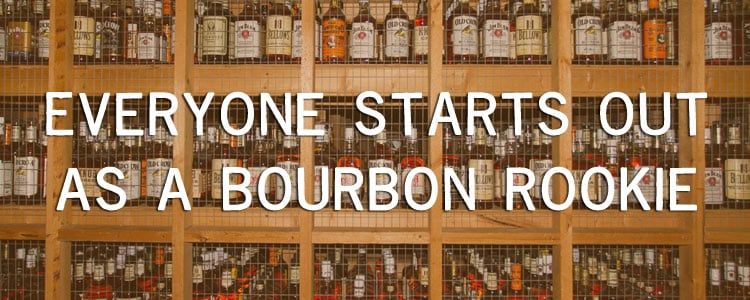A Primer For Bourbon Rookies
Unless you were born a prodigy that was a natural expert at everything, you’ve been a rookie at something before. And, as bourbon gains popularity, more people are finding themselves wanting to try bourbon but aren’t sure where to start.

Unless you were born a prodigy that was a natural expert at everything, you’ve been a rookie at something before. And, as bourbon gains popularity, more people are finding themselves wanting to try bourbon but aren’t sure where to start. So, in honor of Bourbon Heritage Month, I thought I would throw a few pointers out there for those new to the scene and consider themselves bourbon rookies. And for you know-it-alls, you should ace this course without breaking a sweat.
A Brief Bourbon 101 Primer
On a glorious day–May 4, 1964–the United States Congress recognized Bourbon Whiskey as a “distinctive product of the United States.” As such, the Federal Standards of Identity for Distilled Spirits (27 C.F.R. 5.22) state that bourbon must meet these requirements:
- Bourbon must be made of a grain mixture that is at least 51% corn (maize). The remainder is usually a rye or wheat along with a small percentage of barley.
- Bourbon must be distilled to no more than 160 (U.S.) proof (80% alcohol by volume).
- Neither coloring, nor flavoring may be added.
- Bourbon must be aged in new, charred oak barrels.
- Bourbon must be put into the barrel at no more than 125 proof (62.5% alcohol by volume).
- Bourbon, like other whiskeys, may be bottled at not less than 80 proof (40% alcohol by volume.)
- Only whiskey produced in the United States can be called bourbon.
Do Your Bourbon Homework
Do some scouting ahead of time. Think of bourbon as a masterpiece. It is a complex drink and can have so many undertones and influences. If you like spice, find something with a cinnamon or pepper influence. Prefer something sweeter? Look for something with a caramel or vanilla influence for your first taste. A knowledgeable bartender can be a great asset, though don’t give up if you have a bad experience on your first taste. Flights of bourbon are a great way to try a few different brands and really compare the complexities of the taste side by side.
As the base of bourbon must be at least 51% corn, the remainder of the mix can vary. Some distillers use a higher rye recipe (spicier flavor), while others go with a higher wheat blend (softer sweet flavor). Of course this is going to influence the final taste, further contributing to the complexity of the masterpiece.
Here are a few good brands to try that shouldn’t overpower your palate:
- Traditional: Elijah Craig, Knob Creek, Jim Beam
- Higher Rye Content: Basil Hayden’s, Bulleit, Old Forester
- Higher Wheat Content: Makers Mark, Old Fitzgerald, W.L. Weller
If you aren’t accustomed to drinking bourbon, you might want to ease into it a bit. Don’t be intimidated by the “burn.” Add a few ice cubes or a bit of water if you literally can’t take the heat. Some have more of a burn than others, but that is usually the thing that knocks most rookies down first. Get back up, dust off, and have another sip.
Club soda or ginger ale are also good basic mixers to take the burn off but will still give you a good bourbon flavor. And when you add in the idea of cocktails…the only question that remains is–why aren’t you drinking bourbon right now?
Not all bourbons are created equal. Get out there, try something and if you don’t like it, try, try again!
I’m confident that once you begin to understand the flavor profiles and your own palate, you will be singing the praises and helping to spread the bourbon gospel!
I’d love to hear about your first experiences with bourbon in the comments or feel free to ask me any questions about how to dip your toe into the bourbon end of the pool.
